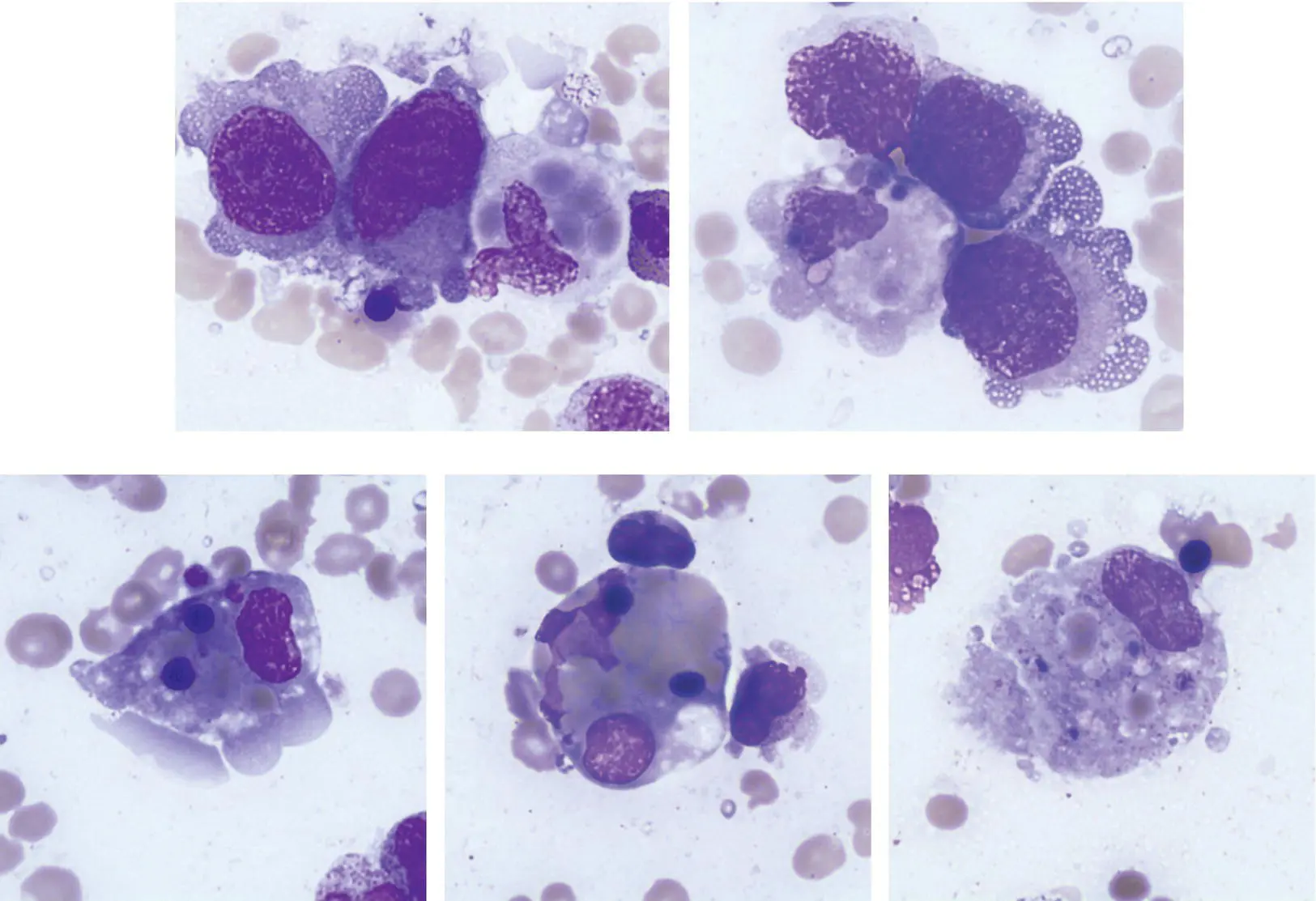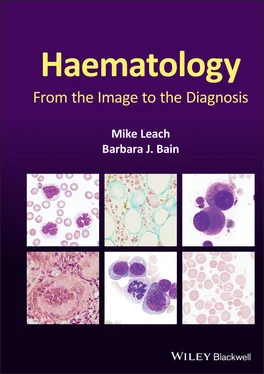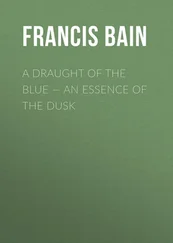Barbara J. Bain - Haematology
Здесь есть возможность читать онлайн «Barbara J. Bain - Haematology» — ознакомительный отрывок электронной книги совершенно бесплатно, а после прочтения отрывка купить полную версию. В некоторых случаях можно слушать аудио, скачать через торрент в формате fb2 и присутствует краткое содержание. Жанр: unrecognised, на английском языке. Описание произведения, (предисловие) а так же отзывы посетителей доступны на портале библиотеки ЛибКат.
- Название:Haematology
- Автор:
- Жанр:
- Год:неизвестен
- ISBN:нет данных
- Рейтинг книги:5 / 5. Голосов: 1
-
Избранное:Добавить в избранное
- Отзывы:
-
Ваша оценка:
- 100
- 1
- 2
- 3
- 4
- 5
Haematology: краткое содержание, описание и аннотация
Предлагаем к чтению аннотацию, описание, краткое содержание или предисловие (зависит от того, что написал сам автор книги «Haematology»). Если вы не нашли необходимую информацию о книге — напишите в комментариях, мы постараемся отыскать её.
Haematology: From the Image to the Diagnosis Haematology: From the Image to the Diagnosis
Haematology — читать онлайн ознакомительный отрывок
Ниже представлен текст книги, разбитый по страницам. Система сохранения места последней прочитанной страницы, позволяет с удобством читать онлайн бесплатно книгу «Haematology», без необходимости каждый раз заново искать на чём Вы остановились. Поставьте закладку, и сможете в любой момент перейти на страницу, на которой закончили чтение.
Интервал:
Закладка:
Library of Congress Cataloging‐in‐Publication Data
Names: Leach, Richard M. (Haematologist), author. | Bain, Barbara J., author.
Title: Haematology : from the image to the diagnosis / Mike Leach, Barbara J. Bain.
Description: Hoboken, NJ : Wiley‐Blackwell, 2022. | Includes bibliographical references and index.
Identifiers: LCCN 2021010953 (print) | LCCN 2021010954 (ebook) | ISBN 9781119777502 (hardback) | ISBN 9781119777519 (adobe pdf) | ISBN 9781119777526 (epub)
Subjects: MESH: Hematologic Diseases–diagnosis | Blood Physiological Phenomena | Examination Questions | Case Reports
Classification: LCC RC636 (print) | LCC RC636 (ebook) | NLM WH 18.2 | DDC 616.1/5–dc23
LC record available at https://lccn.loc.gov/2021010953LC ebook record available at https://lccn.loc.gov/2021010954
Cover Design: Wiley
Cover Image: © Mike Leach
Preface
Despite the tremendous advances that have occurred in diagnostic haematopathology in recent decades, haematology remains firmly based on a clinical assessment of the patient, on basic laboratory tests and on a critical assessment of peripheral blood and bone marrow films. In this book we seek to show how an appreciation of blood and bone marrow morphology, assessed with knowledge of the clinical context, can lead to a provisional or, sometimes, a definitive diagnosis that guides further investigation and management. Each of the 101 themes is followed by a related multiple choice question with the preferred answers and further discussion being found in the second part of the book. The multiple choice questions can have more than one true answer. The themes are sometimes single cases and sometimes a composite of related cases. The book is directed at consultants and trainees in haematology and haematopathology and at clinical and biomedical scientists in these disciplines. We hope that readers will share our enjoyment of the constant sense of discovery that accompanies haematological morphology.
All magnifications are stated in terms of the objective used. Common abbreviations that may be used without definition are given on page xi. Other abbreviations are defined on first use in a theme. All images are of films stained with a May–Grünwald–Giemsa stain unless stated otherwise. The cases are not arranged thematically, since a more random arrangement better approximates to real life.
We wish to thank our clinical and laboratory colleagues with whom we have collaborated over many years.
Mike Leach and Barbara Bain, January 2021
Abbreviations
Full blood count (FBC) components
WBCwhite blood cell countRBCred blood cell countHbhaemoglobin concentrationHcthaematocritMCVmean cell volumeMCHmean cell haemoglobinMCHCmean cell haemoglobin concentration
Others
AAaplastic anaemiaALacute leukaemiaALKanaplastic lymphoma kinaseALLacute lymphoblastic leukaemiaALPalkaline phosphataseALTalanine transaminaseAMLacute myeloid leukaemiaANAantinuclear antibodyAPLacute promyelocytic leukaemiaAPTTactivated partial thromboplastin timeASTaspartate transaminaseATLLadult T‐cell leukaemia/lymphomaBLBurkitt lymphomaccytoplasmicCDcluster of differentiationCHOPcyclophosphamide, doxorubicin, vincristine and prednisoloneCLLchronic lymphocytic leukaemiaCMLchronic myeloid leukaemiaCMMLchronic myelomonocytic leukaemiaCNScentral nervous systemCRPC‐reactive proteinCSFcerebrospinal fluidCTcomputed tomographyDICdisseminated intravascular coagulationDLBCLdiffuse large B‐cell lymphomaDNAdeoxyribonucleic acidEBVEpstein–Barr virusESRerythrocyte sedimentation rateETessential thrombocythaemiaFISHfluorescence in situ hybridisationFDGfluorodeoxyglucoseFLfollicular lymphomaGPgeneral practitionerH&Ehaematoxylin and eosin (stain)HCLhairy cell leukaemiaHLHodgkin lymphomaHLA‐DRhuman leukocyte antigen DRHTLV‐1human T‐cell lymphotropic virus type 1IgimmunoglobulinIgAimmunoglobulin AIgGimmunoglobulin GIgMimmunoglobulin Miuinternational unitLBLlymphoblastic lymphomaLDHlactate dehydrogenaseLGLlarge granular lymphocyteLPDlymphoproliferative disorderMCLmantle cell lymphomaMDSmyelodysplastic syndromeMDS/MPNmyelodysplastic/myeloproliferative neoplasmM:Emyeloid:erythroidMGGMay–Grünwald–Giemsa (stain)MPNmyeloproliferative neoplasmMPOmyeloperoxidaseMRImagnetic resonance imagingNLPHLnodular lymphocyte predominant Hodgkin lymphomaNRnormal rangeNRBCnucleated red blood cellsPETpositron emission tomographyPCRpolymerase chain reactionPRCApure red cell aplasiaPTprothrombin timeR‐CHOPrituximab, cyclophosphamide, doxorubicin, vincristine and prednisoloneRNAribonucleic acidRSReed–SternbergSLEsystemic lupus erythematosusT‐ALLT‐lymphoblastic leukaemiaTdTterminal deoxynucleotidyl transferaseT‐LBLT‐lymphoblastic lymphomaTTthrombin timeuunitWMWaldenström macroglobulinaemia
Normal ranges for commonly used tests (for adults)
FBC and differential count
| Males | Females | |
| WBC (× 10 9/l) | 3.7–9.5 | 3.9–11.1 |
| RBC (× 10 12/l) | 4.32–5.66 | 3.88–4.99 |
| Hb (g/l) | 133–167 | 118–148 |
| MCV (fl) | 82–98 | |
| MCH (pg) | 27.3–32.6 | |
| MCHC (g/l) | 316–349 | |
| Neutrophils (× 10 9/l) | 1.7–6.1 | 1.7–7.5 |
| Lymphocytes (× 10 9/l) | 1.0–3.2 | |
| Monocytes (× 10 9/l) | 0.2–0.6 | |
| Eosinophils (× 10 9/l) | 0.03–0.46 | |
| Basophils (× 10 9/l) | 0.2–0.29 | |
| Platelets (× 10 9/l) | 143–332 | 169–358 |
From Bain BJ (2017) A Beginner’s Guide to Blood Cells , 3rd Edn. Wiley Blackwell, Oxford.
Coagulation tests
| Prothrombin time | 9–13 s |
| Activated partial thromboplastin time | 27–38 s |
| Thrombin time | 11–15 s |
| Fibrinogen | 2–4.5 g/l |
| D dimer | <230 ng/ml |
Other tests
| Albumin | 35–50 g/l |
| Ferritin | 15–300 μg/l (males); 14–200 μg/l (females) |
| Bilirubin | 1–20 μmol/l |
| Alanine transaminase | 0–50 u/l |
| Aspartate transaminase | 0–40 u/l |
| Alkaline phosphatase | 30–130 u/l |
| C‐reactive protein | <5 mg/l |
| Erythrocyte sedimentation rate | <10 mm in 1 h (males); <20 mm in 1 h (females) |
1 Anaplastic large cell lymphoma with haemophagocytic syndrome

A 50‐year‐old man from another health board was transferred to a local hospital for a surgical biopsy of a mediastinal lymph node. He had presented 6 weeks previously with fever, sweats and weight loss. No infective or neoplastic aetiology had been identified. He had progressive pancytopenia and hyperferritinaemia and a diagnosis of idiopathic haemophagocytic syndrome had been considered. He had already been treated at the base hospital with corticosteroids and etoposide. CT imaging, however, had shown abnormal mediastinal lymph nodes, which would not have been accessible by percutaneous needle biopsy.
On arrival at the local cardiothoracic unit he was clearly unwell. The full blood count showed Hb 90 g/l, WBC 2.5 × 10 9/l, neutrophils 1.5 × 10 9/l and platelets 25 × 10 9/l. The coagulation screen showed PT 18 s, APTT 45 s, TT 18 s, fibrinogen 1.4 g/l and D dimer 5500 ng/ml (NR <230). Serum ferritin was >10 000 μg/l. The anaesthetic team phoned to ask for advice regarding management of the coagulopathy prior to surgery. The blood film showed rouleaux and was leucoerythroblastic with a few toxic granulated neutrophils but no neoplastic cell population was evident. We decided to cancel the surgery, review the imaging and perform a bone marrow aspirate and trephine biopsy. A CT scan showed definitely pathological mediastinal lymph nodes. The bone marrow aspirate showed a population of very large lymphoid cells with round or ovoid nuclei, indistinct nucleoli and partially condensed nuclear chromatin without cytoplasmic granules (top images). The cytoplasm of these cells showed prominent vacuolation, often concentrated in apparent pseudopodia (top images). In addition, there was a substantial population of macrophages showing haemophagocytosis, particularly of red cells and their precursors (all images above ×100 objective). The clinical, laboratory and morphological findings were in keeping with a haemophagocytic syndrome. Flow cytometry on the large cell population in the marrow aspirate showed these cells to express CD45, CD2, CD3, CD4 and CD30. No myeloid or B‐lineage antigens were expressed. The bone marrow trephine biopsy sections were also abnormal, showing prominent macrophages displaying haemophagocytosis on H&E staining (below, left image) and CD68R (below, centre image, immunoperoxidase), whilst the large neoplastic cells were highlighted using CD30 (below, right, immunoperoxidase) (all images below ×50). Immunohistochemistry showed the large cells to be ALK negative. The diagnosis was now confirmed as ALK‐negative anaplastic large cell lymphoma. The patient was transferred back to his local hospital with a view to commencing CHOP chemotherapy but after one cycle of treatment he deteriorated further and sadly died.
Читать дальшеИнтервал:
Закладка:
Похожие книги на «Haematology»
Представляем Вашему вниманию похожие книги на «Haematology» списком для выбора. Мы отобрали схожую по названию и смыслу литературу в надежде предоставить читателям больше вариантов отыскать новые, интересные, ещё непрочитанные произведения.
Обсуждение, отзывы о книге «Haematology» и просто собственные мнения читателей. Оставьте ваши комментарии, напишите, что Вы думаете о произведении, его смысле или главных героях. Укажите что конкретно понравилось, а что нет, и почему Вы так считаете.












